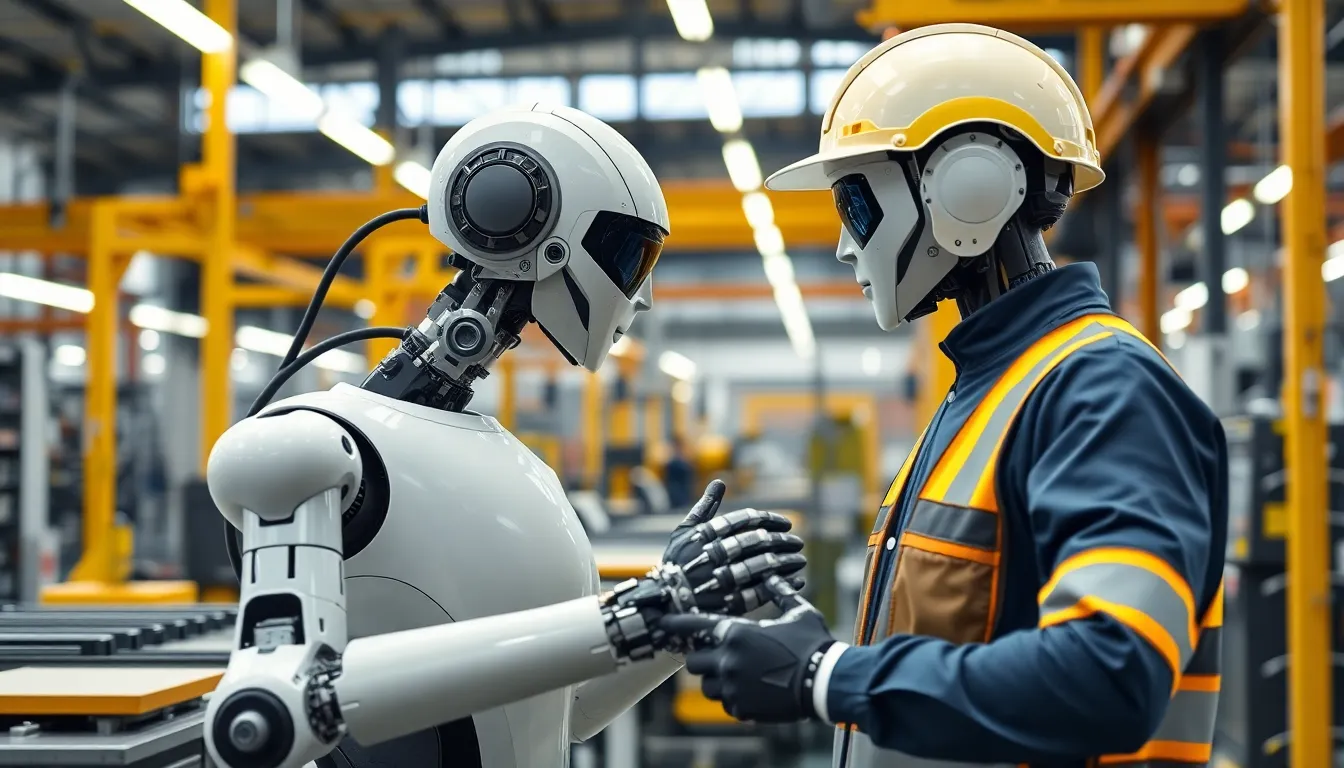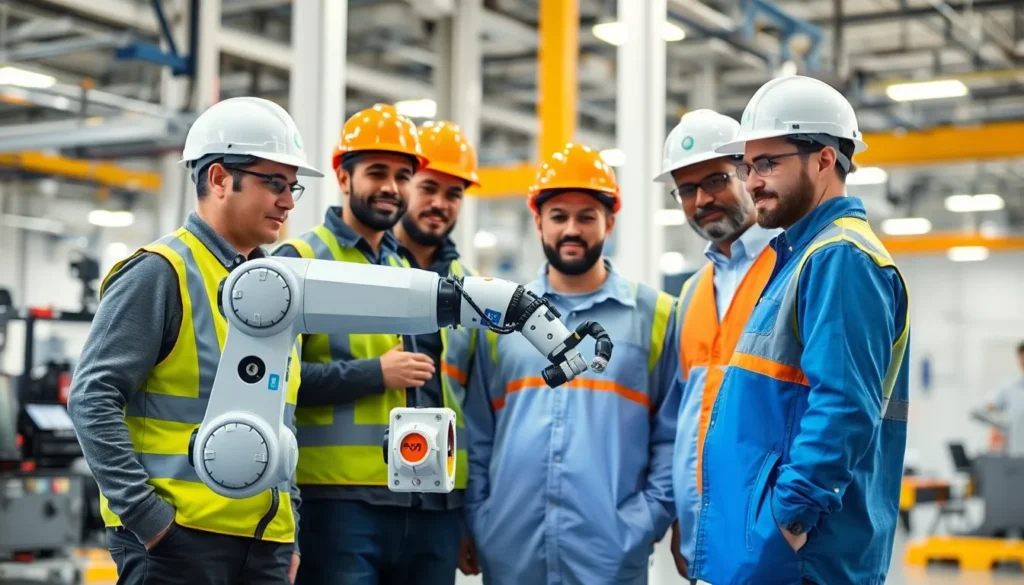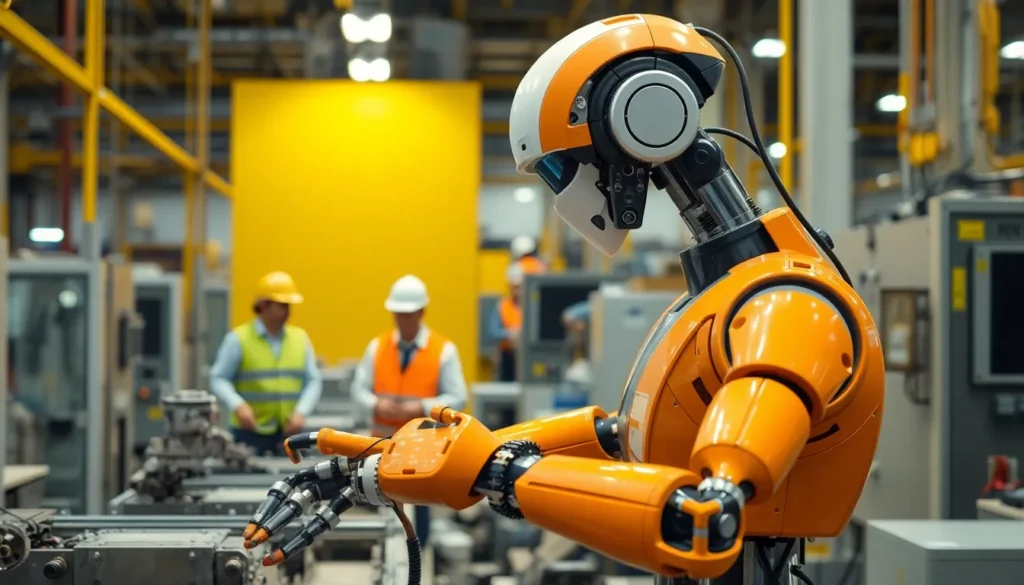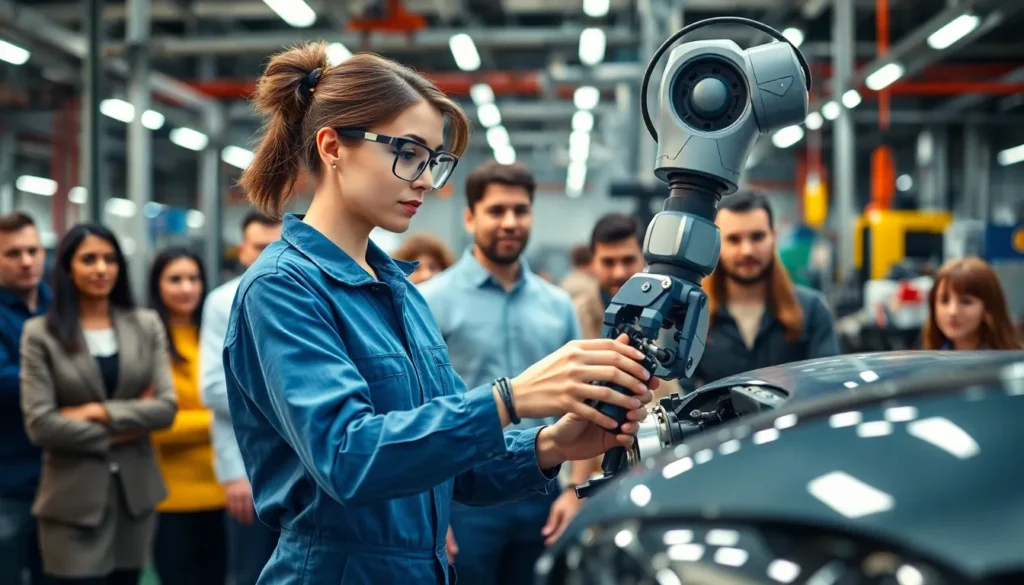In a world where robots are no longer just the stuff of sci-fi movies, robotic solutions are revolutionizing industries faster than you can say “artificial intelligence.” From manufacturing to healthcare, these high-tech marvels are stepping in to tackle tasks that would make even the most dedicated human worker raise an eyebrow. Imagine a robot that doesn’t just follow orders but actually improves efficiency while keeping a straight face—now that’s a game changer!
But it’s not just about efficiency; it’s about creativity too. These robotic solutions are designed to enhance human capabilities, not replace them. So whether you’re looking to streamline operations or just want to impress your friends with your knowledge of the latest tech trends, understanding the impact of robotics is essential. Buckle up as we dive into the fascinating world of robotic solutions and discover how they’re shaping the future.
Robotic Solutions
Robotic solutions encompass a broad range of technologies designed to automate tasks and improve operational efficiency. These systems, found in various sectors, perform repetitive or hazardous tasks with high precision and speed. In manufacturing, for example, robotics streamline production lines and reduce human error, greatly enhancing productivity.
Healthcare applications illustrate another dimension of robotic solutions. Surgical robots assist medical professionals in performing intricate procedures, improving outcomes and minimizing patient recovery times. Advanced robotic prosthetics enable individuals with disabilities to regain mobility, significantly enhancing their quality of life.
The logistics sector also benefits from robotic innovations. Automated guided vehicles transport goods in warehouses, optimizing storage and retrieval processes. Such solutions facilitate precise inventory management, leading to cost reductions and improved service levels.
Agriculture adopts robotic tools such as autonomous tractors and drones for crop monitoring. These technologies allow farmers to increase yields while minimizing resource consumption. By utilizing data-driven strategies, robotics assists in sustainable farming practices.
In addition, robotic solutions enhance customer interactions in retail. Service robots provide information and assistance, improving the shopping experience. Engaging with customers through artificial intelligence further personalizes services, promoting brand loyalty.
Overall, these developments illustrate the diverse applications of robotic solutions across multiple industries. Embracing these innovations not only leads to better efficiency but also fosters a new era of human-robot collaboration, shaping the future of work.
Types of Robotic Solutions

Robotic solutions come in various forms, each designed to cater to specific operational needs across industries.
Industrial Robots
Industrial robots excel in manufacturing environments. They automate tasks such as welding, painting, and assembly with unmatched precision. These machines increase production rates by operating tirelessly and consistently. Statistically, industrial robots can improve productivity by up to 30%. Their ability to minimize defects directly impacts product quality, making them indispensable in factories. Major manufacturers often rely on this technology to streamline workflows and enhance efficiency.
Service Robots
Service robots play a significant role in customer interaction and support. They assist in tasks like cleaning, delivery, and information provision in public spaces. In healthcare settings, robots help with patient care and medication distribution. Data shows that service robots can enhance user experience by providing consistent service and reducing wait times. Additionally, their incorporation into retail environments helps personalize shopping experiences, boosting customer satisfaction.
Collaborative Robots
Collaborative robots, or cobots, work alongside human operators. These flexible machines enhance productivity while ensuring safety in the workplace. Designed with advanced sensors, cobots adapt to their environment and share tasks with people. Studies indicate that cobots can increase efficiency by 20% when integrated into production lines. They foster a cooperative atmosphere, enabling workers to focus on complex tasks while cobots handle repetitive duties.
Applications of Robotic Solutions
Robotic solutions find application across various sectors, profoundly transforming operations through enhanced efficiency and precision. Here are key areas where robotics play a critical role.
Manufacturing
Robotics drives innovation in manufacturing. Industrial robots automate tasks such as welding and painting, increasing productivity by 30%. These machines operate with high precision, minimizing errors and streamlining workflows. Additionally, automation reduces labor costs and enhances safety in potentially hazardous environments. Implementing robotic systems leads to higher output and improved product quality. The integration of cobots—collaborative robots—further fosters human-robot teamwork, ensuring seamless interactions on production lines.
Healthcare
In healthcare, robotic solutions revolutionize surgical procedures. Surgical robots assist surgeons, providing enhanced precision that leads to better patient outcomes. Minimally invasive techniques reduce recovery times significantly, allowing patients to return to daily activities faster. Rehabilitation robots support physical therapy, helping individuals regain mobility through customized exercises. Advanced prosthetics equipped with robotic technology restore functionality for amputees, improving their quality of life. The continuous evolution of robotic systems offers promising advancements in treatment and patient care.
Agriculture
Agricultural practices benefit greatly from robotic innovations. Autonomous tractors optimize tasks like planting and harvesting, increasing efficiency in crop production. Drones monitor field conditions, assessing crop health and enhancing yield quality through detailed analytics. Smart irrigation systems, programmed with robotic controls, conserve water while optimizing resource use. These technologies promote sustainable farming practices, ultimately addressing the challenges of food production. By integrating robotic solutions, farmers enhance productivity, reduce labor costs, and ensure better environmental stewardship.
Advantages of Robotic Solutions
Robotic solutions offer significant advantages across various sectors. They enhance productivity, streamline processes, and improve overall operational effectiveness.
Increased Efficiency
Efficiency levels soar when robotic solutions are implemented in industries. Manufacturing processes benefit from automation of repetitive tasks, resulting in reduced production times. Workers can focus on complex and creative activities since robots handle mundane jobs. Data reveals a potential productivity increase of 30% in manufacturing environments with robotic assistance. This efficiency extends to logistics, where automated guided vehicles optimize inventory management. Speed and accuracy in task completion lead to faster turnaround times and improved overall operations.
Enhanced Precision
Precision remains a hallmark of robotic solutions. Industrial robots perform tasks like welding and assembly with remarkable accuracy, lowering error rates. Data from various studies show that robotic systems can achieve precision levels of 99.9%. In healthcare, surgical robots assist with intricate procedures, allowing for minimally invasive operations. The reduced risk of complications and faster recovery times have transformed patient outcomes. Farmers benefit from drones equipped with advanced sensors that monitor crops, optimizing agricultural practices and ensuring high-quality yields.
Cost Savings
Cost savings emerge as a critical advantage of implementing robotic solutions. Labor costs decline significantly when robots automate routine tasks. Data indicates that automation can reduce labor expenses by up to 20% in certain industries. Additionally, robots minimize waste, enhancing resource utilization and lowering operational costs. In healthcare, surgical robots reduce hospital stays and improve recovery efficiency, further saving resources. Overall, businesses experience improved profit margins through the integration of robotic technologies.
Challenges and Limitations
Robotic solutions face several challenges and limitations that impact their widespread adoption and effectiveness across industries.
Technical Limitations
Technical hurdles continue to hinder robotic solutions. Limited adaptability affects robots’ performance in unpredictable environments. Programming complexities may also create challenges, particularly for tasks requiring intricate decision-making. High costs associated with advanced robotics technology can restrict access for smaller businesses. Furthermore, maintenance demands for robotic systems add operational costs and necessitate specialized knowledge. Data indicates that only 34% of companies feel fully equipped to utilize robotic solutions due to these hurdles.
Ethical Considerations
Ethical concerns present a significant barrier to the implementation of robotic solutions. Job displacement remains a critical issue, as automation threatens many traditional roles. Privacy matters arise with data collection used by robots, leading to potential misuse of personal information. Authorities must ensure compliance with regulations that govern robotic technologies to protect users and workers. Equitable access to robotic benefits also creates a conversation about the digital divide, leaving some communities at a disadvantage. Overall, addressing these ethical considerations is essential for the future integration of robotics in society.
Conclusion
Robotic solutions are undeniably reshaping industries and enhancing the way businesses operate. Their ability to streamline processes and improve precision is paving the way for a more efficient future. As technology continues to evolve, the integration of robotics will likely expand, offering new opportunities for innovation and collaboration.
Embracing these advancements can help organizations stay competitive while addressing the challenges that come with them. By focusing on ethical considerations and ensuring equitable access, society can harness the full potential of robotic solutions. The journey toward a robotic future is just beginning, and the possibilities are truly exciting.



